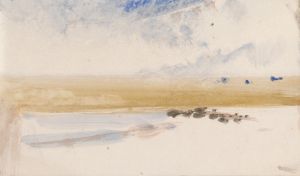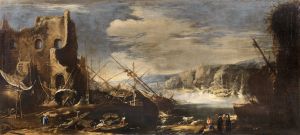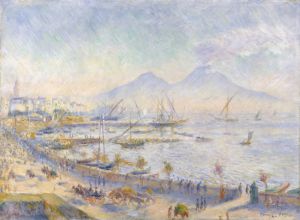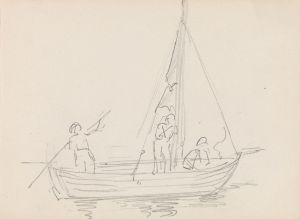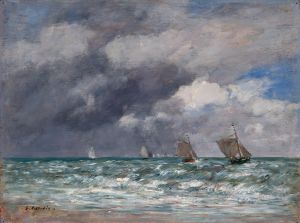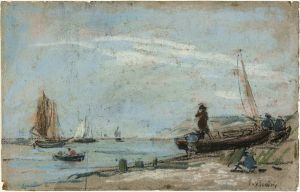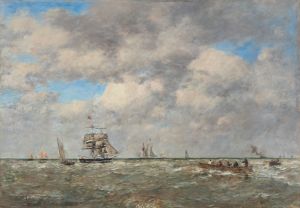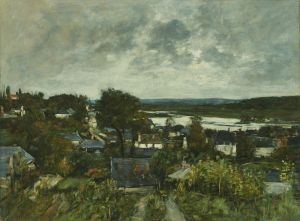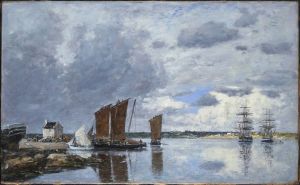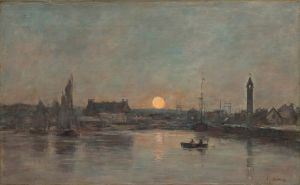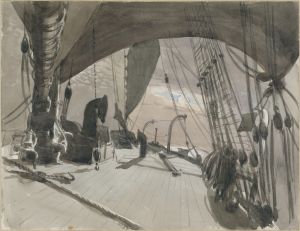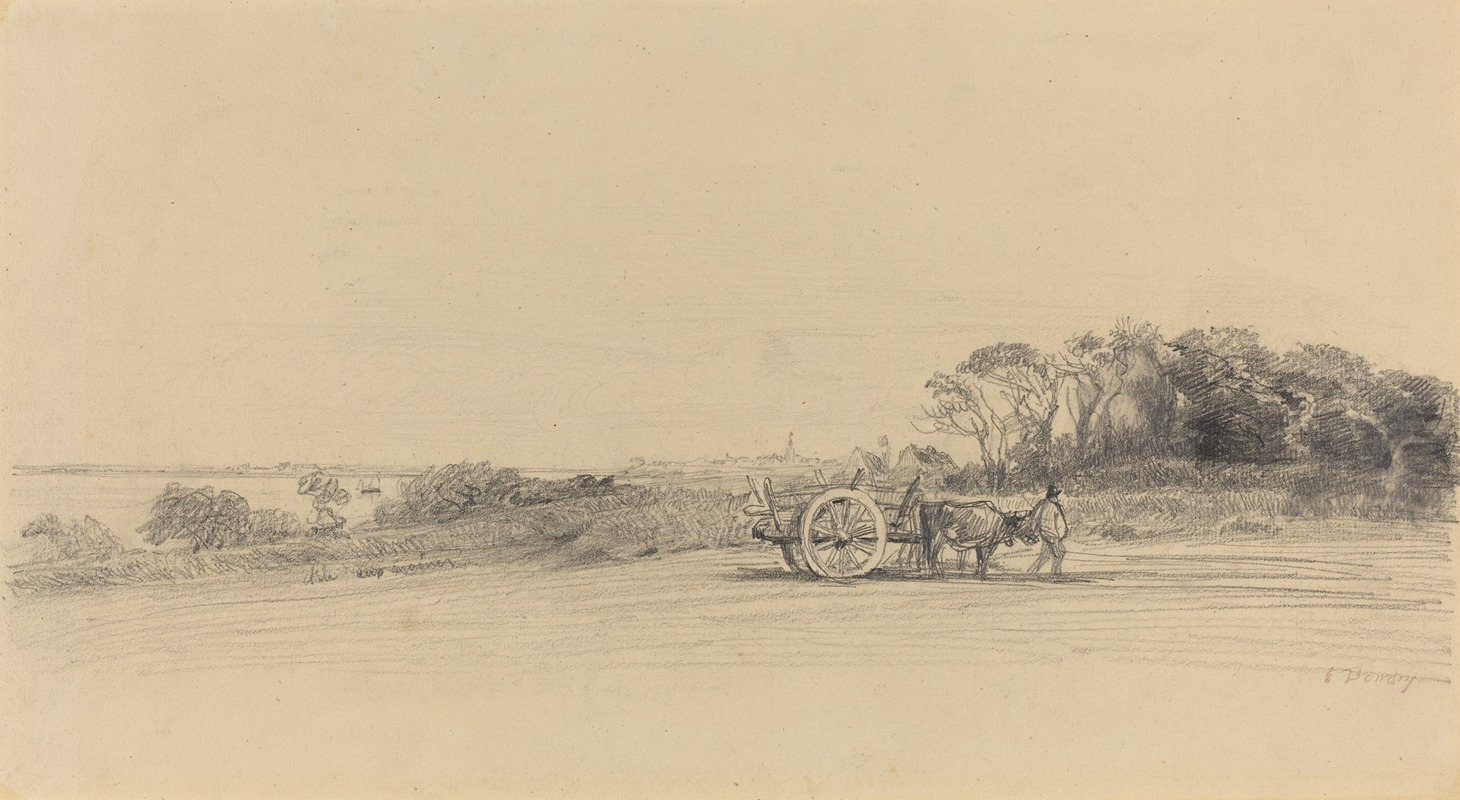
L’Ile aux Moines with Figure and Cart
A hand-painted replica of Eugène Boudin’s masterpiece L’Ile aux Moines with Figure and Cart, meticulously crafted by professional artists to capture the true essence of the original. Each piece is created with museum-quality canvas and rare mineral pigments, carefully painted by experienced artists with delicate brushstrokes and rich, layered colors to perfectly recreate the texture of the original artwork. Unlike machine-printed reproductions, this hand-painted version brings the painting to life, infused with the artist’s emotions and skill in every stroke. Whether for personal collection or home decoration, it instantly elevates the artistic atmosphere of any space.
Eugène Boudin, a prominent French painter, is widely recognized for his significant contributions to the development of landscape painting in the 19th century. Born on July 12, 1824, in Honfleur, France, Boudin was one of the earliest French landscape painters to paint outdoors, or "en plein air," which later became a central tenet of Impressionism. His work is characterized by its delicate depiction of light and atmosphere, often capturing the transient effects of weather and time of day.
"L’Ile aux Moines with Figure and Cart" is one of Boudin's many works that exemplify his mastery in capturing the essence of the natural world. While specific details about this particular painting are scarce, it can be inferred from Boudin's typical style and subject matter that the painting likely depicts a serene landscape scene. L'Ile aux Moines, located in the Gulf of Morbihan in Brittany, France, is known for its picturesque beauty, which would have provided ample inspiration for Boudin's artistic endeavors.
Boudin's paintings often feature coastal scenes, beaches, and rural landscapes, frequently populated with figures engaged in everyday activities. His ability to render the subtleties of light and shadow, along with his keen observation of atmospheric conditions, allows viewers to experience the mood and ambiance of the scene. In "L’Ile aux Moines with Figure and Cart," it is plausible that Boudin employed these techniques to portray a tranquil moment on the island, perhaps capturing the interplay between human presence and the natural environment.
Throughout his career, Boudin maintained a close relationship with several key figures in the art world, including Claude Monet, who regarded Boudin as a mentor. Boudin's influence on Monet and other Impressionists is well-documented, as his plein air techniques and focus on natural light were foundational to the Impressionist movement. Despite his association with Impressionism, Boudin's work retains a distinct style that emphasizes clarity and precision, setting him apart from his contemporaries.
Boudin's dedication to painting en plein air allowed him to capture the ephemeral qualities of the landscape, a practice that was innovative during his time. His works are celebrated for their ability to convey the fleeting beauty of nature, and "L’Ile aux Moines with Figure and Cart" is likely no exception. Although specific information about this painting is limited, it undoubtedly reflects Boudin's commitment to portraying the harmonious relationship between humans and their surroundings.
Eugène Boudin passed away on August 8, 1898, in Deauville, France, leaving behind a legacy that continues to influence artists and captivate audiences. His paintings are housed in numerous prestigious collections worldwide, including the Musée d'Orsay in Paris and the National Gallery of Art in Washington, D.C. Boudin's work remains a testament to his skill and vision, offering a glimpse into the serene and ever-changing world of 19th-century France.






